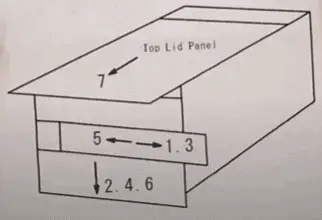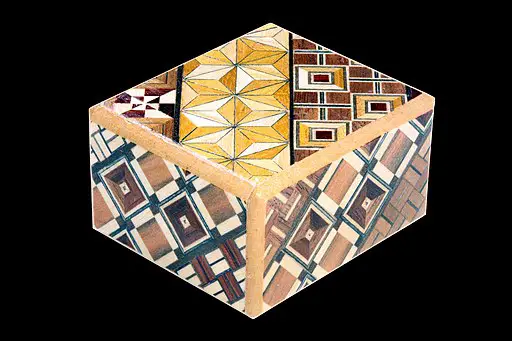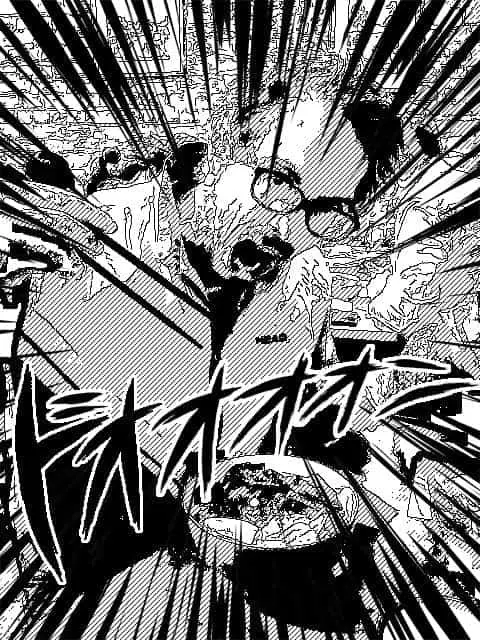What is a Japanese Puzzle Box (And Why Would You Want One)?
Who doesn’t like a puzzle? Think of the way the Rubik’s Cube conquered the world in the 1970s and 80s. Or Tetris in the digital realm in the 1980s. Well, imagine if when you connected up all the colors on the Rubik’s Cube, that it would open up revealing a secret compartment inside.
That’s basically what you get with a Japanese Puzzle Box. The 12 year old within me is so into this. It’s funny how the things that fundamentally entertain humans often sit outside the realm of personal or epochal age. The same things float people’s boats in 1981 as in 1781, though in different forms.
How To Open A Japanese Puzzle Box
To unlock a Japanese Puzzle Box you need to figure out the exact sequence of moves for that particular box. The most common moves are listed below with some videos illustrating how they are done:
- Side bar slide
- Side panel slide
- Top panel slide
- Partial slide
- Full slide
- Simultaneous slide
Here is a diagram of one box’s solution.

Solution for a standard 10 step Japanese Puzzle Box:
Solution for a standard 7 step Japanese Puzzle Box:
Lorem ipsum dolor sit amet, consectetur adipiscing elit. Ut elit tellus, luctus nec ullamcorper mattis, pulvinar dapibus leo.
Solving a Japanese Puzzle Box using simultaneous slide movement:
Nipaylah [CC BY (https://creativecommons.org/licenses/by/3.0)]
Best Japanese Puzzle Boxes
I’ll go into the details of information about Japanese trick boxes, Himitsu Bako or Karakuri Bako in Japanese, but here’s are some of my favorite puzzle boxes, arranged by number of moves each takes to complete.
1-5 Step Japanese Puzzle & Trick Boxes
6-10 Step Japanese Puzzle & Trick Boxes
11-20 Step Japanese Puzzle & Trick Boxes
21+ Step Japanese Puzzle & Trick Boxes
All About Japanese Puzzle Boxes
- History of the Japanese Puzzle Box (Himitsu-bako 秘密箱)
Appropriately enough for boxes that are designed to be mysterious, the exact date of the origins of the Japanese Puzzle Box Himitsu-Bako is not clear. Definitely, they existed by the end of the 18th century, and were being used to protect people’s jewels and money from thieves. Why someone after your precious stones wouldn’t just take the whole box, mystery and all, and smash it with a big old, unmysterious hammer is another puzzle all of its own.
Suffice to say that by the mid 19th century these boxes were being used for keeping things like the new yellow phosphorus matches that were prone to self-ignition if not handled correctly. They were also used to keep children from handling things they were not meant to. Think of the passcode you put on online purchases on your digital devices so that your toddler can’t buy themselves a new skin for the latest perpetual running game. But 1900 style.
When safer red phosphorus matches were invented (Let’s call it “disruption”, 19th century style) the boxes were produced less and started to become collectors items.
From the end of the 19th century more ornate saiku 細工 boxes started to be made in the Southern part of the city of Hakone, called Hatajuku. The start of this tradition is accredited to tradesperson Oogawa 大川隆五郎. The region around Hakone (which interestingly translates literally as box-root) and the Odawara region is blessed with a rich array of tree types and was a mecca for both wood craftspeople and for tourists seeking out the healing waters of the local Onsen. This combination of tradespeople and tourists in such close proximity seems to have been produced the perfect delta for bringing about the culture of fine boxes that exists in the region today.
What To Look For When Buying A Japanese Puzzle Box

Photograph by Rama, Wikimedia Commons, Cc-by-sa-2.0-fr [CC BY-SA 2.0 FR (https://creativecommons.org/licenses/by-sa/2.0/fr/deed.en)]
If you want to get yourself one of these tricky little vessels what do you need to think about? Well, it depends on what you want to use it for. The main things to think about are:
- Price
- Size
- Number of moves to open (and close)
- Craftsmanship
These criteria relate to what you want to put in your puzzle box. There are small boxes, usually quite inexpensive, with slits in the top or side that you can use as a money box. Or ones that are a good size to put keys that you don’t want others to have access to inside. Some boxes are cheap enough that you could put a present inside one and use it as a kind of high quality, and intriguing, gift box. Some might be just the right size to put things in that you don’t want children to have access to, such as a tv remote.
You’ll also want to think about how much you want to use the box purely as a puzzle, in which case you might want to knock yourself out with a dastardly box with a lot of moves. But if you want to open and close your box frequently, you’ll want to get something with just a few opening moves.
Levels of Difficulty
Puzzle boxes have set amounts of sequences of moves that are required to open them up. This could be as low as 1 or two or as high as around 50. There are boxes, let’s call them maniac boxes, that can have moves numbering into the hundreds.
As logic would tell you, a puzzle box with 100 moves is generally going to be more difficult than a box with one move. But not always. It all depends on the flow of each move and how intuitive, or counter-intuitive, it all is.
Wikihow has some tips on opening various types of puzzle boxes here.
Types of Japanese Puzzle Boxes
Yosegi Himitsubako
The Yosegi style of parquet woodwork is one of the most strikingly representative styles of box creation. Yosegi literally means “bringing together wood” and refers to the delicately intertwined patterning of wood. The angular designs on these pieces are exquisite, orderly explosions of geometry. Although they are rich in color and tone, traditionally none of the pieces are painted or artificially colored. Instead, they draw on the innate colors of the trees from which they are taken. They form a visually symphonic homage to the natural world. This means that no two boxes are quite the same. It’s this inherent one-of-a-kindness that makes them so collectible.
There is somewhere in the vicinity of 60 patterns, although the number of possible patterns is theoretically infinite. Some of the classics include tortoiseshell, checkerboard, cloisonne arrowhead and hemp leaf patterns.
Karakuri-bako (絡繰り箱)
Kamei named these new boxes “Karakuri”, meaning “mechanical” in Japanese.
What Sizes Are Himitsu-bako?
Japanese trick and puzzle boxes are measured using the traditional Japanese measruing unit of the “Sun” (pronounced a little like the English word “soon”). A “Sun” is approximately 3 centimeteres or 1.2 inches. So a 10 sun box would be around the size of a standard 30cm (12 inch) ruler. There really is no limit to the range of sizes that the boxes come int, but somewhere between 3 and 6 Sun is generally the most popular size span.
How Many Steps Do Himitsu-bako have?
Artisans make boxes in a range of steps all the way from 2 to 100! Certain “novelty” pieces have been made with more than 1000 steps. Most popular box step numbers tend to be either in the10 or less or the 20 or more categories.
Steps can be sequential, meaning they have to be completed in 1-2-3-4 orders, or can be non sequential. The difficulty of steps can vary, meaning that box with more steps is not necessarily going ot be more difficult than a box with less steps.
How to take care of a Japanese Puzzle Box
Himitsubako are delicate works of art, made of wood. As such they need to be treated with care. The main thing to keep in mind is that you should never try and force a step in the opening process or you risk irrepairably damaging the item.
If you need to clean the box, it is generally best to wipe it with a dry soft cloth, or a wet cloth if it is especially dirty.
How Japanese Puzzle Boxes Are Made
Most quality Japanese wooden puzzles created by a craftsperson. In many ways, they are little works of art. The craft is most often learnt through the Master-Apprentice relationship.
A trick box starts with a design. The larger the box, and the more steps to open, the more elaborate the original concept lay out. The sliding mechanisms involved mean that measurements must be precise to allow fluid movement of the mechanisms. This can often be the difference between a cheaper and a more expensive box.
A wood is chosen for the box, with woods around the hakone region being the most popular.
As the piece is constructed it needs to be tested along the way to make sure everything is in working order.
Lastly the piece is finished with Yosegi-Zaiku and the distinctive mosaic style patterning is created.
Japanoscope uses affiliate links. Which means we may receive commisions when you click on some product links. We only link to products we believe in, use ourselves or think are genuinely good. This helps us keep all of the content on the site free of charge. As Monty Python once said, “We’re selling records in the foyer. Some of us have gotta eat too you know”.

Who is behind this site?
I’m Peter Joseph Head. I lived in Japan for four years as a student at Kyoto City University of the Arts doing a Masters Degree, have toured the country six times playing music and speak Japanese (JLPT N1). I’ve written songs in Japanese and have released several albums through Tokyo label Majikick Records.
ピータージョセフヘッドです。4年間京都市立芸大の大学院として日本に住み、6回日本で音楽ツアーをし、日本語能力試験で1級を取得しました。要するに日本好きです。
